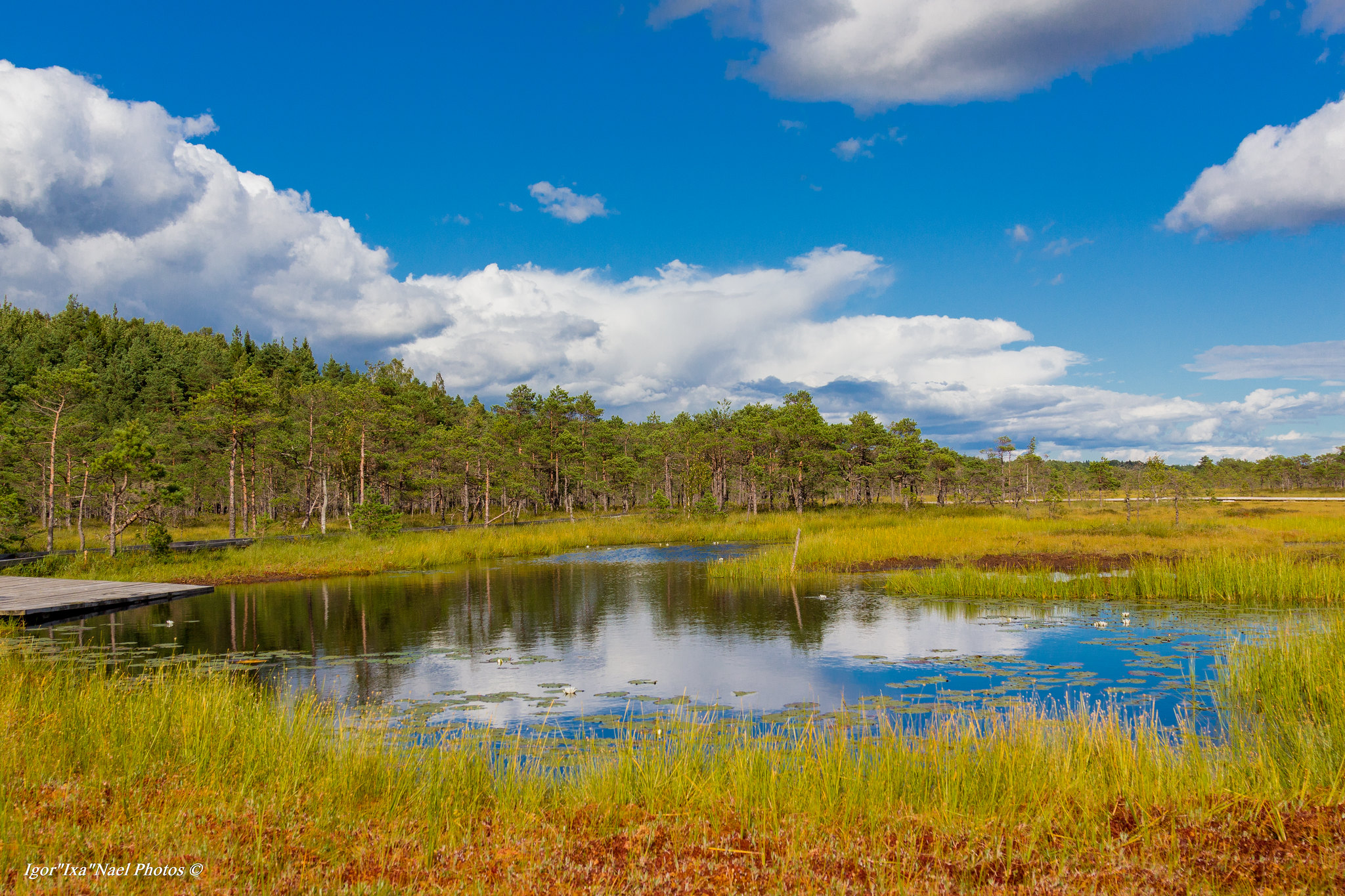In Estonia, mires currently cover about 6% and peatlands (former mires) cover about another 16% of the land area

Types of mires:
-
Minerotrophic fen is the first stage of mire development. In a minerotrophic fen, the peat layer is thin and the plants get their nutrients from groundwater. Minerotrophic fen vegetation is generally species-rich and lush, as the plants reach the groundwater. Today, most minerotrophic fens have been drained and mostly converted to arable land.
-
A mixotrophic (transitional) fen is a transitional mire type between the minerotrophic fen and the bog and has the characteristics of both. The mixotrophic fen is usually a relatively short (a few hundred years) transition phase. The peat layer is thicker there than in the minerotrophic fen.
-
The (raised) bog is the last stage of development of the mire. Here, the surface of the mire has become raised due to the deposition of peat, and the plants growing there get their nutrients only from rainwater and airborne dust, as the roots no longer reach the groundwater. Under such conditions, relatively few plant species can grow and the species richness of bogs is lower than in minerotrophic or mixotrophic fens.
Distribution and protection of mires
Most of Estonia’s paludified areas have now been drained and no more peat is growing there. In Estonia, mires currently cover about 6% and peatlands (former mires) about another 16% of the land area. Pärnu County has the most mires – 11.5% of the area; it is followed by Ida-Viru County (11.0%) and Lääne County (10.9%). Valga County has the least mires – there, mires make up 2.3% of the county [1].
The mire habitat types of European importance in Estonia are active raised bogs (7110*, priority habitat type of the European Union Habitats Directive), degraded raised bogs still capable of natural regeneration (7120), transition mires and quaking bogs (7140), depressions on peat substrates of the Rhynchosporion (7150), Fennoscandian mineral-rich springs and springfens (7160), calcareous fens with Cladium mariscus and species of the Caricion davallianae (7210*), petrifying springs with tufa formation (Cratoneurion), (7220*) and alkaline fens (7230).
In Estonia, an action plan for the protection of mires for 2016–2023 has been prepared. It sets out monitoring the condition of mires, establishes protection procedures, protects existing mires, and works on restoring them. 75% of Estonian mires are in protected areas, of which 83% are strictly protected by a strict nature reserve or conservation zone regime.
Mires affect the climate around the world. Natural mires sequester carbon dioxide and other greenhouse gases, while drained mires, on the other hand, emit large amounts of them into the atmosphere. In addition, mires are important as reservoirs of clean water and habitats for species. Natural mires are important conservators of biodiversity and landscape diversity, sources of oxygen, and natural purifiers and clean water reservoirs for river basins.
Last modified: 08.11.2021
__________________________________________________________________________________________
[1] R. Roasto jt. Eesti looduse kaitse aastal 2020. Tallinn: Keskkonnaagentuur 2020.